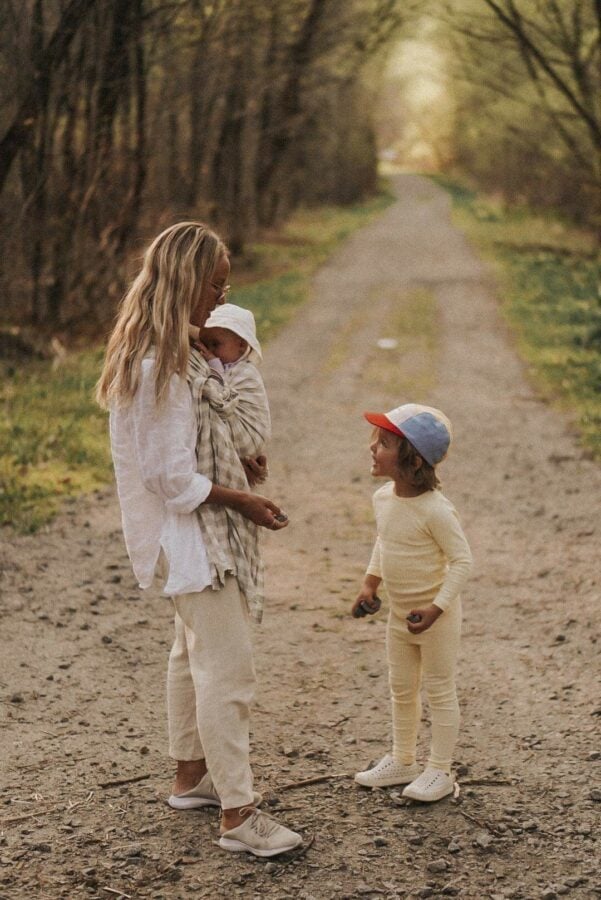To learn more about babywearing, go to Babywearing and Choosing a Baby Carrier.
This history of babywearing highlights different ways to carry a baby – in your arms, on your stomach, on the side, back, facing outwards, breastfeeding while carrying them, and even carrying them in water. In the animal world, many species carry their offspring to ensure their survival. Carrying a baby helps to protect them and travel faster when predators are around. For example, monkeys carry their babies after birth as they depend on their mother for food, hygiene, protection, etc. Babywearing is a traditional, natural and instinctive mothering technique.
People around the world still practice babywearing. Parents can take care of daily tasks while keeping their children close to them. Mexicans use rebozos, Peruvians manta shawls and the Inuit an amauti. Here are a few photos of babywearing around the world.
Over time with the development of modern culture, humans have forgotten ancient practices. The first rigid strollers and car seats appeared after the two world wars, which have harmed the babywearing tradition. Is old new again? I think that nature is taking back its rightful place, a balance between physical contact between parent and baby and safety in certain situations. There is nothing preventing cohabitation between these two ways to transport your baby.
“A child who is carried on the back will not know how far the journey is.” (African proverb)
In the past, some people argued that regularly babywearing a baby can spoil it and harm their autonomy and independence. Do you believe that? Research over the past years has shown how physical contact and proximity are essential for child development at the physical, motor, psychologic and social level.
On the contrary, it promotes their wellbeing. Children that were regularly “babyworn” at a young age developed a feeling of security and confidence in themselves and their parents (attachment relationship). The child will then explore their environment confidently. Parents also benefit from babywearing.
To learn about the benefits of babywearing for baby and parents, go to Babywearing Benefits for Babies.


